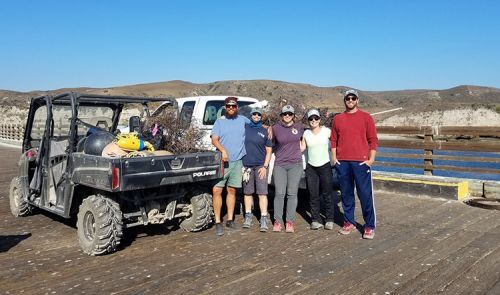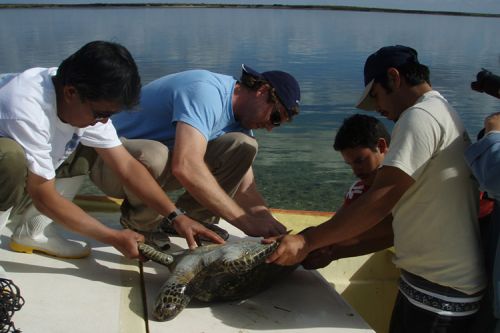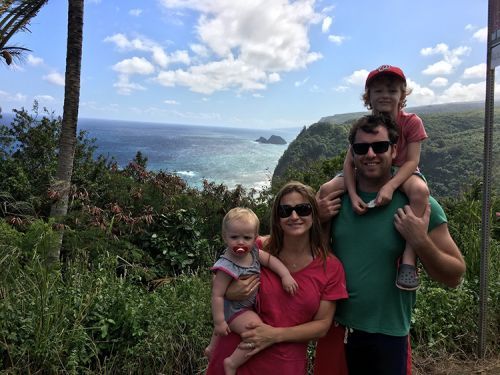Minds Behind OR&R: Meet Marine Debris Program’s Tom Barry
By Jennifer Simms, Office of Response and Restoration Marine Debris Program
This feature is part of a monthly series profiling scientists and technicians who provide exemplary contributions to the mission of NOAA’s Office of Response and Restoration (OR&R). In this month’s feature meet Tom Barry, a management and program analyst in OR&R’s Marine Debris Program
When it comes to the trash and debris that plague our coasts and waterways, we're all part of the problem, but we're also all part of the solution. Still, it takes experts to lead the way with research to show us how we can better help to prevent and remove marine debris — experts such as Tom Barry, a management and program analyst with NOAA's Marine Debris Program. The program offers several nationwide, competitive funding opportunities for marine debris projects. These include: marine debris removal grants; prevention through education and outreach grants; and research grants. Tom manages this grant process, which funds on-the-ground work that is conducted by dedicated partners.
In addition to providing grants, Tom said his position with NOAA allows him to “meet and interact with a diverse group of people both within the agency, as well as those in different communities throughout the country doing a lot of really great work for our environment.”
To get to where he is today, it helps that he spent his childhood surrounded by ocean. Tom’s father worked in the oil industry, which led them to the island nation of Indonesia. Growing up on an island, Tom spent the weekends with family and, as a Boy Scout, attended many camping trips at the beach. His love for the outdoors even influenced his Eagle Scout project where he installed trash bins at a local golf course where he and his dad spent a lot of time together. Because of his upbringing, it seemed that he would be destined to work in the field of marine debris, but this career choice wasn’t yet on his radar.

Even with the ocean as a backyard, it wasn’t until his years away at college in Colorado — about as far away from the ocean as possible — that he decided to focus more time learning about marine issues. After graduating from the University of Colorado with a bachelor’s in international affairs, he moved to Florida, became scuba certified, and landed a job at a dive shop. As a deckhand he enjoyed being out on the water and diving every day. All those logged hours underwater allowed Tom to get to know the local marine life of South Florida up close and personal, and he was hooked.
Tom returned to school to earn a master’s degree in marine affairs and policy from the University of Miami’s Rosenstiel School of Marine and Atmospheric Science (RSMAS). During his time at RSMAS, he studied the importance of Marine Protected Areas (MPAs) and the management challenges facing those areas in the Caribbean region.
After graduating, Tom accepted a position with the National Fish and Wildlife Federation’s Marine Programs located in Washington D.C. There he focused on sea turtle and coral conservation, and yes, even marine debris. After a few years, Tom was fortunate to get a job with NOAA in 2009, first starting in NOAA Fisheries’ Community-based Restoration Program, and later moving to the Marine Debris Program within NOAA’s Office of Response and Restoration.
Tom manages the marine debris grant program, but he also provides support to the environmental compliance processes that help keep the program in line with environmental laws and policy requirements. He offers support to the program’s budget planning processes, along with a variety of other special projects for the program.
As busy as he is, Tom is energized and rewarded by this work because he gets to see up close, and in a small way be a part of, a broad array of projects being done to address marine debris and ocean pollution. From his position located at the NOAA headquarters in Silver Spring, Tom has first-hand exposure to the different ideas people have for taking care of their beaches and waterways.
“It shows that many people do care about the well being of their community, especially in the face of an issue as daunting as widespread litter and marine debris,” Tom said.
Working for the Marine Debris Program has only continued to strengthen Tom’s appreciation for the marine environment. And lucky for him, salty water is less than a two hour drive away.
“I enjoy spending time with my family and we try to get outdoors whenever we can,” Tom said. “I still enjoy getting out on the water in Florida, where much of my family still lives, and pointing out the marine life to my children. All my experience and the work I do for NOAA help me to introduce my kids to marine conservation and the importance of respecting and caring for our oceans.”
 An official website of the United States government.
An official website of the United States government. 

